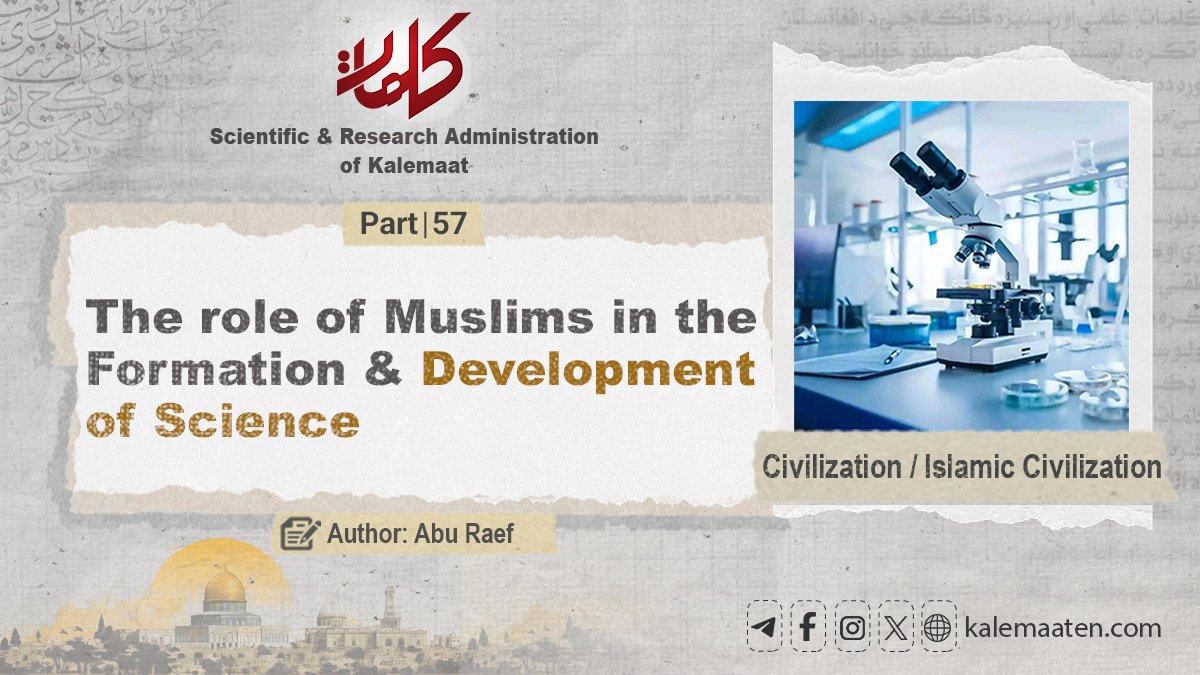Author: Abu Raef
The Role of Muslims in the Formation and Development of Science (Part 57)
Innovations in Artifacts:
In the realm of aesthetics, the intrinsic value of an artifact holds little significance, for the focus here is on its beauty, not its material worth. Oftentimes, the simplest products reveal signs of the most intricate aspects of a people’s life, and these very products assist us in understanding the technical knowledge of their creators and the needs of both the makers and consumers.
Gustave Le Bon, the renowned Western writer, testifies that industrial arts were widespread among the Arabs and that the objects they created were crafted with such magnificence that even their most modest industries exhibited artistic taste. [1]
The endless patterns used in Islamic decorative art are found everywhere. These are not limited to the ornamented pages of the Qur’an with their beautiful Kufic calligraphy; rather, even copies of stories or poems dedicated to a caliph or prince were adorned in the same manner. These uplifting decorations are not confined to mosques; they are also manifest in the construction of guesthouses, schools, and residential homes.
These infinite patterns are not only found on the Qur’an stands in mosques, but also appear on the plates Muslims eat from, the armor and swords of soldiers, and even the scarves used to cover one’s head. Therefore, it is accurate to say that Islamic art is a unique form of comprehensive art encompassing all beautiful and decorative objects, regardless of their intended function. [2]
The widespread use of ornamentation in Islamic artifacts—even if the items are of little material value—is an evident sign that requires no argument or proof.
This phenomenon began at the very dawn of Islam. It is narrated that the sword the Prophet Muhammad (PBUH) gave to Abu Dujanah (may Allah be pleased with him) on the Day of Uhud had an inscription on one of its sides:
“Fear is disgrace and attack is pride.
And man does not escape divine destiny by fear.”
Poetry, too, was the enchanting magic that stirred the hearts of the Arabs.
Thereafter, all Islamic artifacts evolved in such a way that, with the expansion of Islamic civilization, they reached astonishing levels of elegance and refinement. Gustave Le Bon, who was astonished by Islamic art, says about jewelry-making, adornments, and inlay work: “Their skill in some of these crafts is so great that attaining such mastery in our time is difficult.” [3]
Almost all Islamic artifacts became works of art: swords, armor, spears, daggers, helmets, scroll cases, household items such as chairs, tables, jewelry boxes, dishes, pots, cups, trays, inkwells, doors and windows, clothing, fabrics, animal saddles, mosque lamps, pulpits, candlesticks, weighing scales, keys and locks, door rings, axes, writing tools, and medical instruments—even hookahs. All of these belong to the realm of crafts in which beauty and decoration were essential elements. Jewelry such as earrings, necklaces, rings, turban pins, anklets, and other adornments are also part of this collection. [4]
Will Durant also affirms that Muslims’ adoption of the arts of previous civilizations was not mere imitation, but rather an internalization that led to the production of originality and innovation. He states: “This art was a skillful blend of various forms, and borrowing from other nations did not diminish its value. Islamic art—which stretched from the Alhambra Palace in Andalusia to the Taj Mahal in India—transcended the borders of time and place, opposed racial and ethnic distinctions, and created a style both unique and multi-dimensional. This art depicted the human spirit with an unmatched delicacy never before seen.” [5]
The author of Atlas of Islamic Civilization also believes that Islamic aesthetics, with its endless patterns, seeks to express the concept of Tawhid (Divine Unity). Its expansion in all things reflects a worldview obliging the Muslim to base all his actions on Islamic thought.
Thus, when a Muslim artist created even a simple wooden stationery box, he would decorate it so elaborately with ivory, shells, and colored woods that the original material no longer mattered. One couldn’t tell whether the wood was oak, teak, or mahogany.
The same applies to grand palaces, where the main building materials were entirely hidden beneath layers of decoration. This reflects a philosophy that deems the material value of raw materials insignificant and defines beauty independently of material worth. This is the essence of Islam’s simple and ascetic philosophy: beauty can manifest itself in the simplest and least valuable things, and thereby, beauty becomes the foremost and central concern of human conscience. [6]
This perspective, which represents the artistic philosophy of Islam, is in itself a contribution worthy of deep and prolonged study, for it has profound effects on shaping the Islamic conscience and the human outlook on the world, life, nature, and God.
Continues…
Previous Part/ Next Part
[1] – Arab Civilization, p. 653 and onward.
[2] – Al-Faruqi, Ismail Raji, Atlas of Islamic Civilization, p. 539, Al-Obeikan Library, Riyadh, First Edition, 1419 AH.
[3] – Arab Civilization, p. 664, et al.
[4] – What Did the Muslims Contribute to the World? p. 618
[5] – Same source
[6] – Atlas of Islamic Civilization, p. 540



